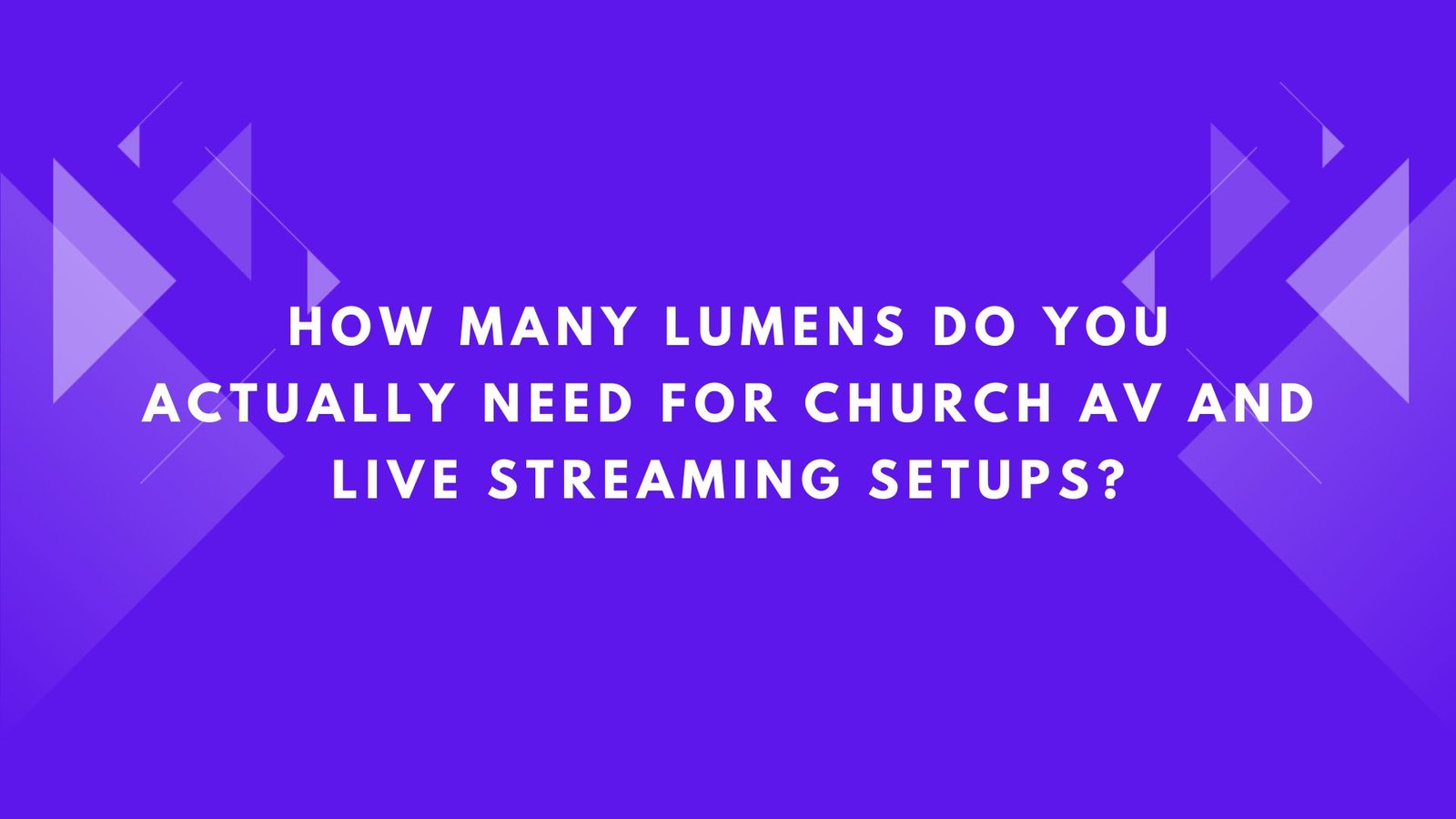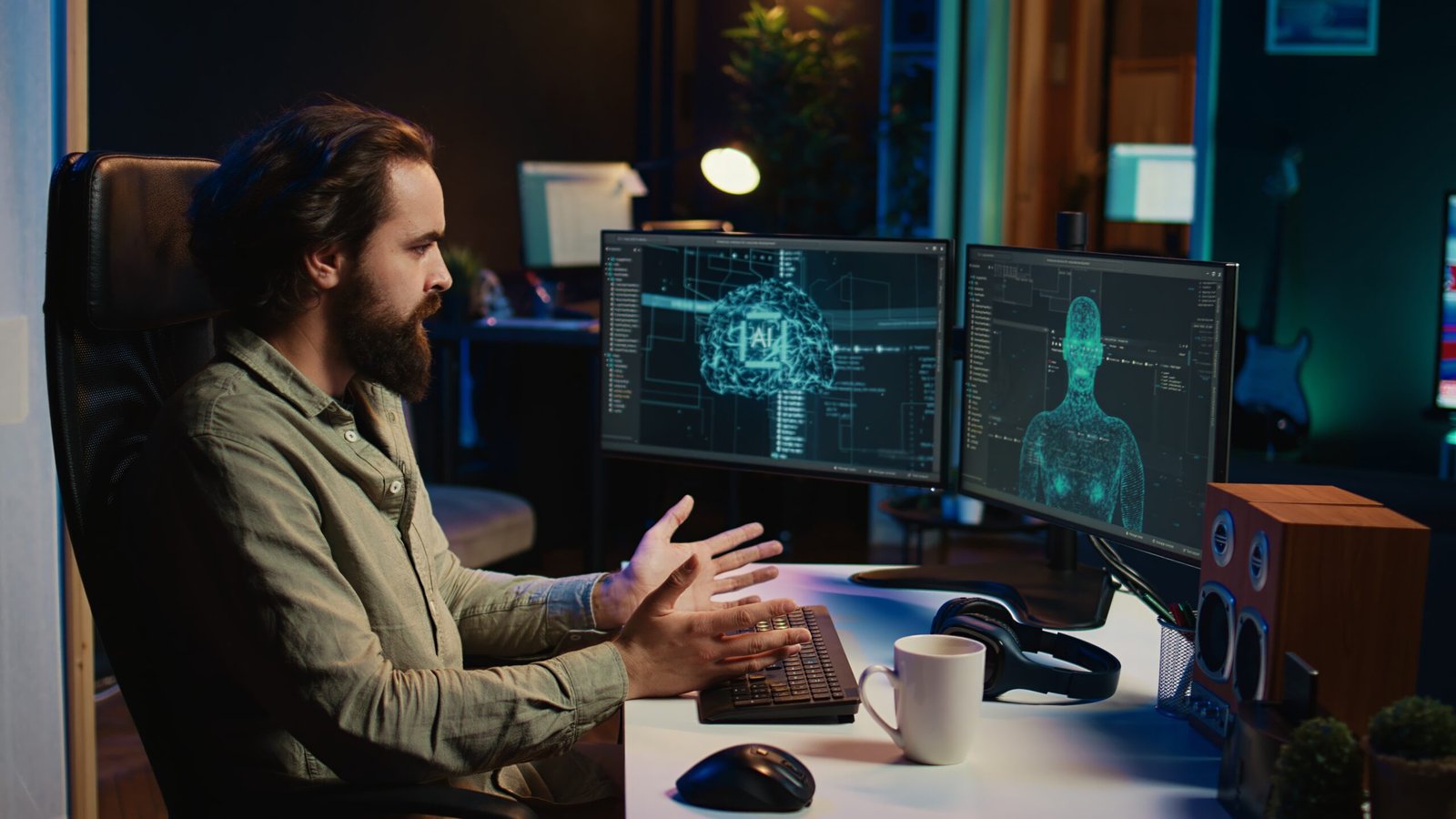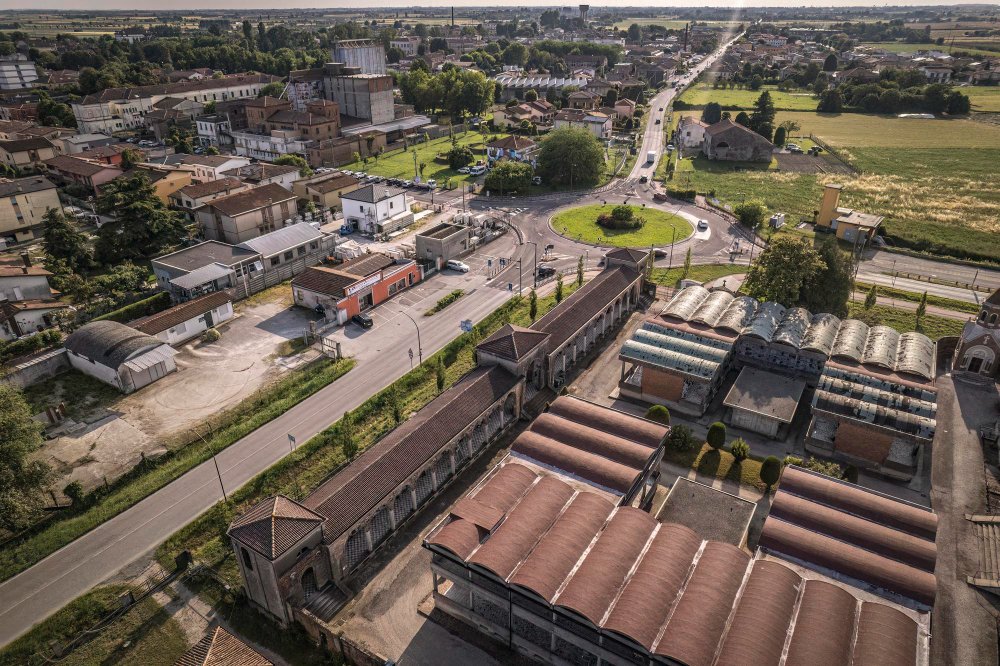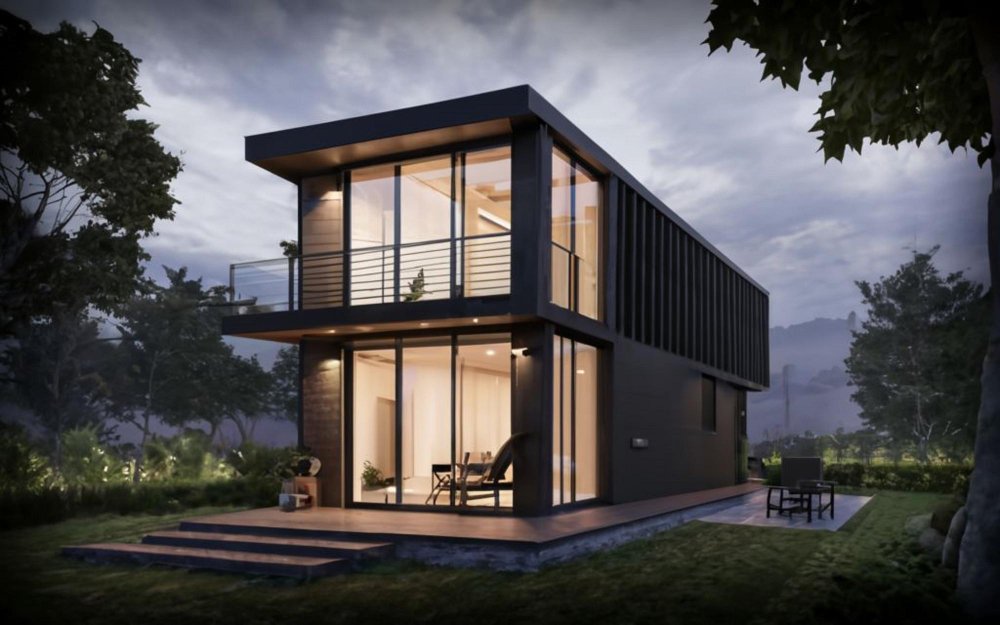When it comes to creating a powerful and inspiring worship experience, audio and video play a vital role. Churches today are not just physical spaces but also digital sanctuaries where live streaming services reach congregants around the world. One essential but often overlooked element of church AV and live streaming setups is lighting—specifically, how bright your projectors or stage lighting should be. This brings us to an important question. How many lumens do you actually need to ensure clarity, visibility, and professionalism in both in-person and online worship settings?
In this blog, we will break down what lumens are, why they matter in church AV environments, and how you can determine the right brightness for your sanctuary and live streaming setup.
What Are Lumens and Why Do They Matter in Churches?
Lumens are the measure of brightness emitted by a light source or projector. The higher the lumen rating, the brighter the output. In a church environment, proper brightness ensures that visual content on screens is readable by the congregation, and lighting enhances the video quality for live streaming.
Whether you are projecting hymn lyrics, scripture, sermon slides, or broadcasting a live service online, the clarity of your visuals depends heavily on how many lumens do you actually need for your specific setup. Too few lumens can make visuals washed out or unreadable. Too many can cause glare or discomfort, especially in smaller, darker spaces.
Factors That Affect Your Lumen Requirements
There is no one-size-fits-all answer. The number of lumens required will depend on several factors including:
- Ambient Light in the Sanctuary
The more natural or artificial light present, the higher the lumen output you will need. A brightly lit sanctuary will require a more powerful projector or lighting system than a dark, theater-style space. - Size of the Projection Screen
Larger screens disperse light over a greater area, so you will need more lumens to maintain image brightness and clarity. A 100-inch screen in a bright room requires significantly more lumens than an 80-inch screen in a dim one. - Distance Between Projector and Screen
The farther the projector is from the screen, the more brightness is lost in transit. This will also affect how many lumens do you actually need to get a crisp and vibrant display. - Camera Quality and Lighting for Live Streaming
Cameras need consistent and adequate lighting to produce high-quality video. If your stage or pulpit is poorly lit, your live stream will suffer in image sharpness and professionalism.
Recommended Lumens for Church Projectors
To help you get a clearer idea, here are some general recommendations for projector brightness in church environments:
- Small churches or chapels (under 100 seats)
If the room can be dimmed and has limited ambient light, a projector with 2,000 to 3,000 lumens may be sufficient. - Medium-sized churches (100 to 300 seats)
In spaces with moderate lighting, opt for projectors with 3,500 to 5,000 lumens to ensure good visibility from all seats. - Large sanctuaries or cathedrals (300+ seats)
For brightly lit or large sanctuaries, you will need 5,000 to 7,000 lumens or more to maintain a vivid, readable image across a wide space.
The same brightness level may not apply to every scenario, so ask yourself honestly how many lumens do you actually need based on the size, lighting, and seating arrangement in your worship space.
Stage Lighting and Lumens for Live Streaming
Live streaming your church service requires even more attention to lighting. Dim or uneven lighting can result in grainy or poorly lit video. Professional-looking streams depend heavily on the lighting setup.
Here are a few guidelines:
- Key Lights
Use 1,000 to 2,000 lumens of focused lighting per subject (such as the pastor or worship leader). This helps keep faces well-lit and clear on camera. - Fill and Back Lighting
Add 500 to 1,000 lumens on the sides and behind the subject to reduce shadows and add depth to the scene. - LED Panels or Softboxes
Use LED lighting with adjustable brightness and color temperature. These often allow fine-tuning so you can control how many lumens do you actually need based on the camera exposure settings.
Lighting consistency is key. Ensure your camera is not constantly compensating for low or changing lighting conditions, which can affect focus and video quality.
Balancing Lighting for In-Person and Online Audiences
Many churches struggle with balancing lighting that works both for in-person attendees and for online viewers. Bright lighting may help the camera, but it can feel harsh for those sitting in the congregation.
Here is how to find a balance:
- Zone Lighting
Light the stage or pulpit more brightly than the seating area. This keeps the camera view clear without over-lighting the entire sanctuary. - Use Dimmable Fixtures
Having control over brightness lets you adapt lighting based on time of day or service type. - Test and Adjust
Record a test stream and evaluate the lighting. Make small adjustments until both your in-person and online environments are visually comfortable.
Ask again, how many lumens do you actually need to create an engaging experience for everyone? The answer lies in thoughtful planning and testing.
Final Tips for Church AV Lighting Success
- Choose projectors that list ANSI lumens, as these are standard and reliable.
- Avoid lighting directly above or behind the subject to prevent shadows or backlighting issues.
- Match lighting color temperature (Kelvin) to the mood of the service. Use cooler light for sermons and warmer tones for music or prayer segments.
- Consider professional AV consultation if your setup involves complex lighting or large spaces.
Designing AV Systems That Are Easy to Maintain
Conclusion
Lighting and projector brightness are key elements of a successful church AV and live streaming setup. Whether you are presenting sermon slides to a seated congregation or broadcasting worship services to a global audience, it is essential to choose the right brightness levels for your space. Take into account room size, natural light, screen dimensions, and the specific needs of your video setup.
So when planning your church AV system, always ask yourself this critical question—how many lumens do you actually need? By making informed decisions, you can enhance both the in-person worship experience and the quality of your digital ministry.
Read more: https://social.sktorrent.eu/read-blog/31585
















Leave a Reply